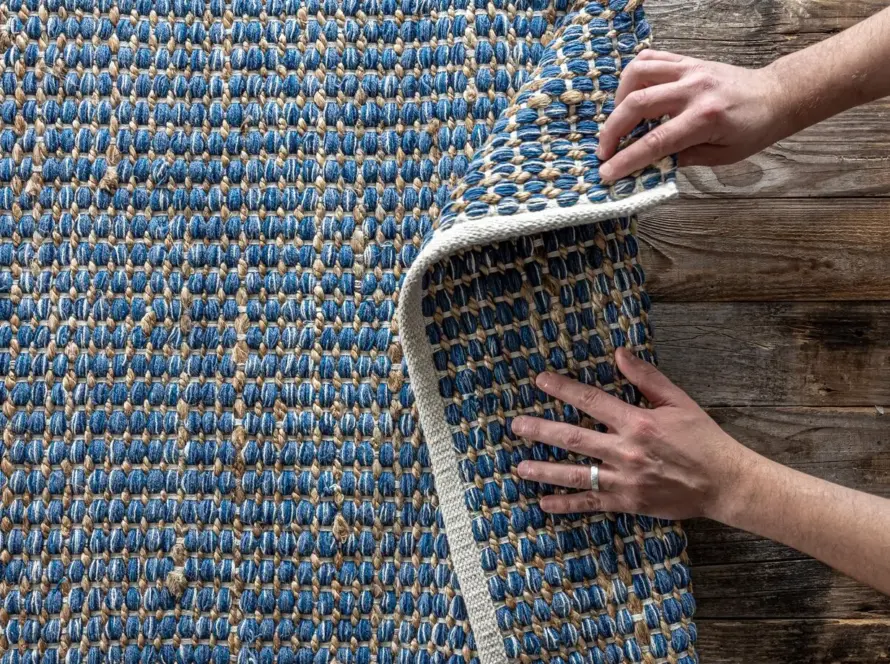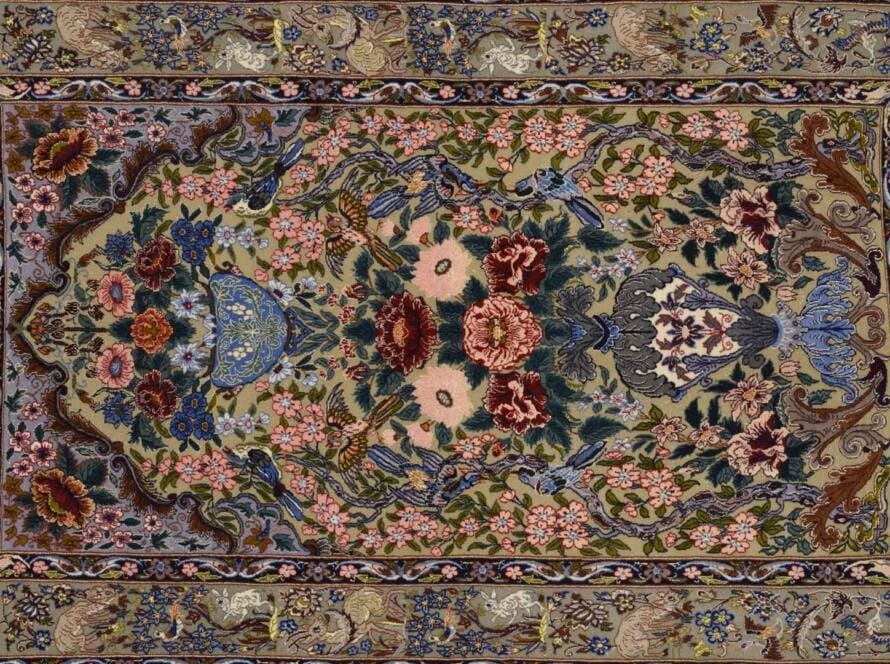As 2024 unfolds, interior design trends are shifting, and rugs are playing a central role in transforming spaces. The trending rugs this year feature bold patterns, sustainable materials, and vibrant colors that reflect personal style and enhance the aesthetics of any room. Homeowners looking to elevate their interiors will find that these rugs serve not just as floor coverings, but as statement pieces that can influence the overall ambiance.
Texture also features prominently in the rug trends of 2024. Woven textures and multidimensional silhouettes are gaining popularity, allowing for creativity and depth in design. As people continue to seek comfort in their living environments, the choice of rugs becomes essential in creating inviting and functional spaces.
This year also emphasizes eco-friendly choices, with many manufacturers offering sustainable options that do not compromise on style. The combination of innovative design with environmental consciousness is at the forefront of the rug market. Embracing these trends can lead to a more cohesive and stylish home.
Exploring Trending Rugs Varieties of 2024
Rugs varieties in 2024 focus on innovative designs and enhanced durability. Key trends reflect a blend of aesthetic appeal and practical advantages, catering to diverse consumer preferences.
Design Trends and Innovations
In 2024, carpet design embraces bold patterns that challenge traditional aesthetics. Geometric shapes, floral motifs, and abstract designs dominate the market. Varieties of carpet design have evolved to include sustainable materials, such as recycled fibers, appealing to eco-conscious consumers.
Textural elements also play a role in current trends. Woven and plush carpets deliver a tactile experience that enhances comfort. Tufted rugs are particularly notable for their softness, making them popular choices in residential spaces.
Color palettes shift towards earthy tones, pastels, and rich jewel hues, providing versatility in design. Textured, multicolored rugs can add dynamic allure to any room, effectively blending style with functionality.
Durability and Longevity
Durability remains a crucial factor for consumers when selecting carpets. Synthetic fibers, like nylon and polyester, are renowned for their resilience and stain resistance. These materials can withstand heavy foot traffic, making them ideal for both residential and commercial spaces.
Natural fibers, such as wool, retain their appeal due to longevity and ease of maintenance. While wool carpets are often softer, they may require more care than synthetic options.
To ensure longevity, consumers should also consider the carpet’s construction. High-density tufting and weaving techniques enhance strength and lifespan. They should also explore backing options that prevent wear and tear over time, contributing to both durability and comfort.
Choosing the Right Rug for Your Space
Selecting the ideal rug involves careful consideration of both size and material. The right choices enhance a room’s aesthetic while providing comfort and functionality.
Sizing and Placement
When determining the size of a rug for a living room, measuring the seating area is crucial. Ideally, a rug should extend beyond the front legs of sofas and chairs to create a cohesive look. Common sizes include:
- 5×8 feet: Suitable for smaller spaces or when used in front of a sofa.
- 8×10 feet: Ideal for larger seating arrangements, allowing all chairs to sit on the rug.
- 9×12 feet: Works well in expansive rooms, helping to define areas within an open layout.
Placement matters as well. Centering a rug under a coffee table helps anchor the furniture arrangement. For larger spaces, multiple rugs can define different areas, such as seating zones or dining sections.
Material and Texture Selection
The choice of material and texture significantly impacts the rug’s durability and style. Common materials include:
- Wool: Offers warmth and resilience; suitable for high-traffic areas.
- Cotton: Lightweight and easy to clean; best for casual settings.
- Synthetic fibers (e.g., nylon, polyester): Affordable options with resistance to stains and fading.
Texture can alter a room’s ambiance. A plush rug adds comfort, while a flatweave option provides a modern, minimalistic feel. Consider the room’s overall decor when choosing colors and patterns. Bold designs can serve as focal points, while neutral tones typically complement various styles.
Care and Maintenance of Rugs
Proper care and maintenance of rugs is essential for prolonging their life and maintaining their appearance. Key areas to consider include washability and cleaning methods, as well as strategies for ensuring longevity and preserving quality.
Washability and Cleaning
Many modern rugs, including those from manufacturers like Shivalika Rugs, come with washability features. This makes maintenance significantly easier. Rugs can be machine washed or spot cleaned, depending on the material.
For machine-washable rugs, follow these steps:
- Check the Label: Always read the care label for specific washing instructions.
- Use Cold Water: Cold water is gentler and reduces the risk of color fading.
- Mild Detergent: Select a mild detergent to prevent damage.
- Air Dry: Avoid using a dryer to prevent shrinkage and warping.
For non-washable rugs, regular vacuuming and spot cleaning with suitable cleaners will help maintain their look. For stains, it’s best to act quickly with a soft cloth and mild cleaning solution.
Lifespan and Quality Preservation
The lifespan of rugs can vary significantly based on materials and usage. High-quality rugs can last anywhere from 10 to 20 years, depending on care.
To preserve quality, consider these factors:
- Placement: Avoid direct sunlight to prevent fading.
- Rotation: Regularly rotate rugs to promote even wear.
- Padding: Use a rug pad underneath to provide cushioning and prevent slipping.
Additional care tips include professional deep cleaning every few years and addressing spills immediately to prevent permanent stains. Proper maintenance is key to enjoying rugs for a long time.
Identifying and Sourcing Quality Carpets
Understanding how to identify and source quality carpets involves examining manufacturing techniques and recognizing the value of hand-knotting. These factors are crucial for ensuring a durable and aesthetically pleasing rug.
Assessment of Manufacture Techniques
Manufacturing techniques heavily influence the quality of carpets. Techniques such as tufting, weaving, and knotting each have distinct characteristics.
- Tufting: Often machine-made, tufted carpets may lack durability compared to hand-crafted options. The backing can determine longevity.
- Weaving: This method entails interlacing yarns, resulting in a sturdy structure. Look for woven carpets made from high-quality fibers like wool or silk.
- Knotting: Different styles, such as Persian or oriental knotting, indicate the craftsmanship’s complexity.
When assessing a carpet, examine the back for weaving patterns and signs of workmanship. The finer the knot, the higher the quality, with more knots per square inch indicating craftsmanship.
Importance of Hand Knotting
Hand-knotting remains a revered technique in the carpet industry. Its significance lies in both durability and aesthetic appeal.
- Durability: Hand-knotted carpets endure wear better than machine-made options. Each knot is tightly secured, leading to less shedding and a longer lifespan.
- Artisan Craft: These carpets often feature intricate designs that reflect cultural heritage. Such details result from skilled artisans dedicating hours to create unique works of art.
Hand-knotted carpets can also appreciate value over time, making them a wise investment. Buyers should seek carpets with visible craftsmanship, where individual knots are distinguishable.
The Carpet Industry Landscape
The carpet industry is characterized by a mix of innovation and traditional practices. Key players dominate the market, while new manufacturing techniques are reshaping production methods.
Leading Wholesalers and Manufacturers
Shivalika Rugs stands out as a prominent player in the carpet industry. As a carpet wholesaler in India, it provides a variety of floor coverings, including hotel carpets and PVC floor carpets. Their extensive catalog meets diverse consumer needs, from residential spaces to commercial applications.
The company specializes in high-quality faux fur rugs, catering to the growing demand for stylish and luxurious decor. Shivalika’s commitment to quality and design places it among the leading manufacturers in the sector.
Other notable manufacturers and wholesalers also contribute to the industry’s growth, focusing on sustainable practices and eco-friendly materials to appeal to conscious consumers.
Innovative Manufacturing Processes
Innovation plays a crucial role in the carpet industry. Advanced technologies in fiber production and dyeing processes enhance both durability and aesthetic appeal.
Shivalika Rugs employs state-of-the-art machinery that supports increased efficiency and precision in manufacturing. This approach results in consistent quality across their product lines, including faux fur and PVC carpets.
Automation in the production process allows for faster turnaround times and reduced labor costs. Moreover, the use of sustainable materials in crafting carpets is becoming a key focus for many manufacturers, facilitating a balance between quality and environmental responsibility.
Choosing Trending Rugs for Commercial Spaces
Selecting the right rugs for commercial spaces requires a blend of functionality, aesthetics, and durability. Factors such as industry standards and the specific environment play a significant role in the decision-making process.
Hospitality Industry Standards
In hospitality, rugs must meet high standards for durability and design. They should withstand heavy foot traffic while maintaining their appearance. Materials such as nylon or polypropylene are favored for their resilience and ease of cleaning.
Slip resistance is also crucial. Many spaces, like hotels and restaurants, benefit from rugs that feature non-slip backing or low-profile designs to minimize tripping hazards.
Furthermore, incorporating design elements that reflect the brand identity can enhance guest experiences. Patterns and colors should complement the overall decor while providing warmth and comfort.
Corporate and Business Environment Considerations
In corporate settings, the choice of rugs often leans towards professional aesthetics and functionality. The best-grade carpet for office use is usually a low-pile, commercial-grade option that balances comfort and durability.
Consideration of acoustic properties can also be important. Carpets that absorb sound help reduce noise levels in open office spaces.
Maintenance is key in these environments. Choosing synthetic fibers that resist stains and are easy to clean can prolong the lifespan of the rug. Organizations often prefer neutral colors and understated designs to promote a professional atmosphere.




